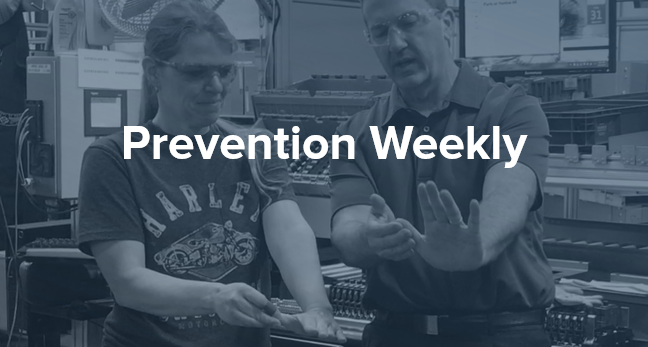Prevention Weekly delivers the best ergonomics, workplace athlete health, and safety leadership news right to your inbox every week.
Featured Article
Does Your Safety Team Have the Necessary Musculoskeletal Health Expertise?
Our experience has been that proactive musculoskeletal health initiatives are most successful when deployed through a specialized provider who bridges the discipline gaps that create organizational silos. Their role is “injury prevention specialist” and their responsibility is exactly that — to prevent injuries through a total, comprehensive approach that incorporates all the musculoskeletal health disciplines.
Does Your Safety Team Have the Necessary Musculoskeletal Health Expertise?
Ergonomics
Become an Ergonomic Assessment Expert
Ergonomic assessments are a foundational element of any ergonomics process. Don’t settle for slow, inaccurate, below average risk assessments.
Become an Ergonomic Assessment Expert
Ergonomics Case Study: Lift Assist and Two-Step Stool
In theory and practice, ergonomics is a valuable business tool. Good ergonomics reduces injury risk, improves work performance and efficiently builds a better end product. This case study moves away from abstract theory and dives into the real world practice of ergonomics.
Ergonomics Case Study: Lift Assist and Two-Step Stool
Workplace Athlete Health
Preventing Text-Neck
This term is used to describe the neck pain associated with looking down at your cell phone, tablet, or other device too often and for too long of a duration. Today’s technological and mobile world means that we use our phones or tablets for almost everything it seems. Text messages, phone calls, work calendars, social media: we’re glued to our phones almost constantly. What can we do to combat text neck without giving up our devices all together?
Lower Back Injury Prevention 101
Back pain is the second most common neurological ailment in the US, only headache is more common. Most lower back injuries are mechanical in nature, the result of acute strain or chronic disorders such as degenerative disc disease or arthritis. Acute low back discomfort may be caused by work factors, a sports injury, work around the house, a sudden jolt such as a car accident or other lifestyle factors. Fortunately, most occurrences of low back discomfort go away within a matter of days. By far, the best way to manage low back fatigue and discomfort is to PREVENT it in the first place!
Lower Back Injury Prevention 101
Safety Leadership
Simplifying Safety
“Albert Einstein said, ‘If you can’t explain it to a five-year-old, you don’t understand it yourself.’ Some take this as an insult, but I have always thought of it as the ultimate challenge.”
Safety and Performance Excellence: Simplifying Safety
Ergonomics Plus solutions help proactive safety teams prevent musculoskeletal injuries and advance employee well-being.
